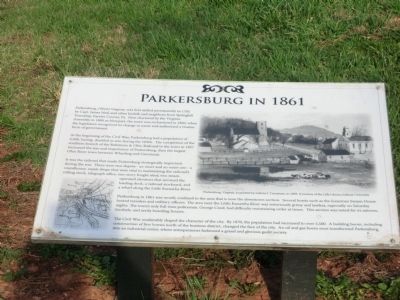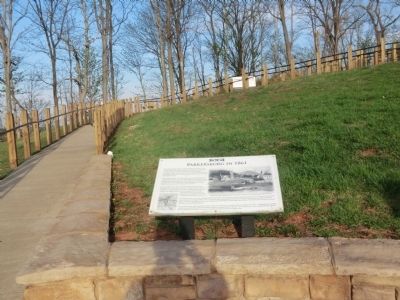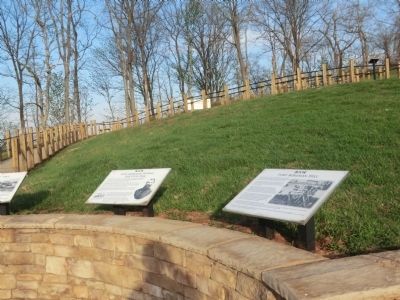Parkersburg in Wood County, West Virginia — The American South (Appalachia)
Parkersburg in 1861
At the beginning of the Civil War, Parkersburg had a population of 2,500, having doubled in size during the 1850s. The completion of the southern branch of the Baltimore & Ohio Railroad to the town in 1857 increased the size and importance of Parkersburg, then the largest Ohio River town between Wheeling and Cincinnati.
It was the railroad that made Parkersburg strategically important during the war. There were two depots - an inner and an outer one - a roundhouse, repair shops that were vital to maintaining the railroad’s rolling stock, telegraph office, two-story freight shed, two steam operated elevators that serviced the loading dock, a railroad stockyard, and a wharf along the Little Kanawha River.
Parkersburg in 1861 was mostly confined to the area that is now the downtown section. Several hotels such as the luxurious Swann House hosted travelers and military officers. The area near the Little Kanawha River was notoriously grimy and lawless, especially on Saturday nights. The town’s only full-time policeman, George Creel, had difficulty maintain order at times. This section was noted for its saloons, brothels, and seedy boarding houses.
The Civil War unalterably shaped the character of the city. By 1870, the population had increased to over 5,500. A building boom, including construction of fine homes north of the business district, changed the face of the city. An oil and gas boom soon transformed Parkersburg into an industrial center, where entrepreneurs fashioned a grand and glorious gaslit society.
(caption)
(upper right) Parkersburg, Virginia, as painted by Lefevre J. Cranstone, in 1859. (Courtesy of the Lilly Library, Indiana University)
Topics. This historical marker is listed in these topic lists: Railroads & Streetcars • Settlements & Settlers • War, US Civil. A significant historical year for this entry is 1785.
Location. 39° 15.726′ N, 81° 34.155′ W. Marker is in Parkersburg, West Virginia, in Wood County. Marker is on Fort Boreman Drive, one mile south of Robert Byrd Highway (U.S. 5). The marker is located in Fort Boreman Park. Touch for map. Marker is in this post office area: Parkersburg WV 26101, United States of America. Touch for directions.
Other nearby markers. At least 8 other markers are within walking distance of this marker. Welcome (a few steps from this marker); Fort Boreman During The Civil War (a few steps from this marker); Fort Boreman (a few steps from this marker); William L. “Mudwall” Jackson (within shouting distance of this marker); Fort Boreman Hill (within shouting distance of this marker); a different marker also named Fort Boreman (within shouting distance of this marker); Historic Parkersburg (West) Virginia (within shouting distance of this marker); Parkersburg and the Civil War (within shouting distance of this marker). Touch for a list and map of all markers in Parkersburg.
Credits. This page was last revised on June 16, 2016. It was originally submitted on May 11, 2014, by Don Morfe of Baltimore, Maryland. This page has been viewed 425 times since then and 19 times this year. Photos: 1, 2, 3. submitted on May 11, 2014, by Don Morfe of Baltimore, Maryland. • Bernard Fisher was the editor who published this page.


